SMS text messages can be an effective way to reach remote and hybrid workforces—but employers need to understand the legislation that regulates this internal communication channel. Learn how to adhere to SMS compliance so your texts respect your employees’ rights and privacy.
Employers are turning to new internal communication methods to reach their employees wherever they may be, and SMS text messages are a particularly effective channel. But any business sending mass text messages needs to adhere to various legislations that regulate how SMS messages are sent.
We’ll explore how SMS compliance laws like the Telephone Consumer Protection Act (TCPA) affect your SMS text messages to employees. We’ll also show you how you can protect yourself from legal liability by ensuring you follow relevant text message laws and SMS regulations for respecting your employees’ privacy.
Take a self-guided tour of ContactMonkey
See how our key features can streamline your internal communications.
Take product tour

What is SMS Compliance
SMS compliance describes the rules and regulations that govern how businesses use SMS text messages to mass communicate. To protect the rights and privacy of its population, the U.S. Congress passed the Telephone Consumer Protection Act in 1991, which among other things regulated how SMS communications can be used to contact private citizens.
The TCPA outlines specific guidelines that businesses must follow when sending SMS messages to customers, potential customers, and employees. TCPA compliance revolves around a business’ responsibility to obtain consent from those it wishes to message, and the concept of express written consent is still what dictates businesses’ SMS text messaging compliance today.
Let’s review some important SMS compliance key terms and concepts you’ll need to know to get the most of this guide:
SMS consent
SMS consent describes an agreement between the sender and receiver of a text message. The receiver has to give permission to a sender that signals they are allowed to contact them with messages. TCPA compliance for SMS prescribes that the receiver must provide express written consent to the sender prior to being sent any communications.
Express written consent can take several different forms: a completed sign-up form on a website, verbal consent over the phone or in-person (though verbal consent must be recorded), text messaging a certain code to the sender, or other forms. When a receiver provides their express written consent to a sender, this is known as opting in.
Conversely, when a person no longer wishes to receive communications, TCPA SMS compliance requires businesses to provide an easy-to-use unsubscribe mechanism. This can be a checkbox or form at the bottom of an email, or an option to text “UNSUBSCRIBE” to the sender. This is known as opting out, and after an individual has opted out from receiving particular communications, the sender can no longer legally send them messages.
Types of messages
In addition to consent, the guidelines for business compliance for text messaging depend on the type of message being sent. So let’s review the types of messages outlined within the TCPA text compliance guidelines and break down key SMS texting best practices.
Promotional messages are communications aimed at encouraging the sale of products or services. These can include sales offers, discount codes, or any request that solicits the recipient.
Pro Tip: Instantly generate tailored employee messages directly from your email builder with ContactMonkey’s OpenAI integration.
Transactional messages are communications that are meant to inform the recipient about information they need to know. Confirmation messages are a common kind of transactional message, including order confirmations, password resets, service changes, and even two-factor authentication.
Both promotional and transactional messages are regulated by the TCPA texting laws for business, though the restrictions for transactional messages are looser than those for promotional messages. In any case, it is best to err on the side of caution and always obtain express written consent before sending any messages to individuals, lest you end up sending text spam: unwanted and unsolicited messages for which SMS consent has not been obtained from the recipient—which are in violation of business compliance for text messages.
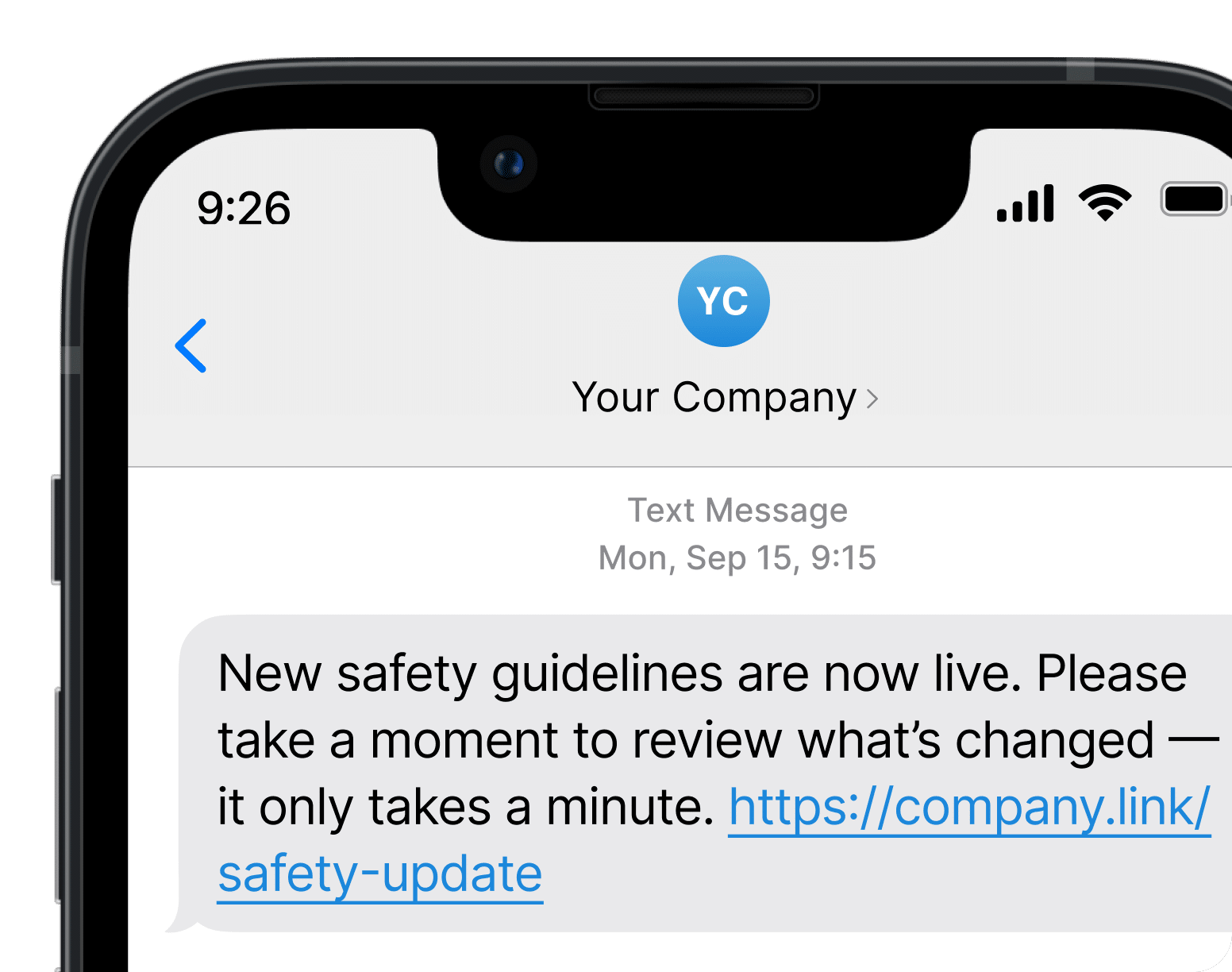
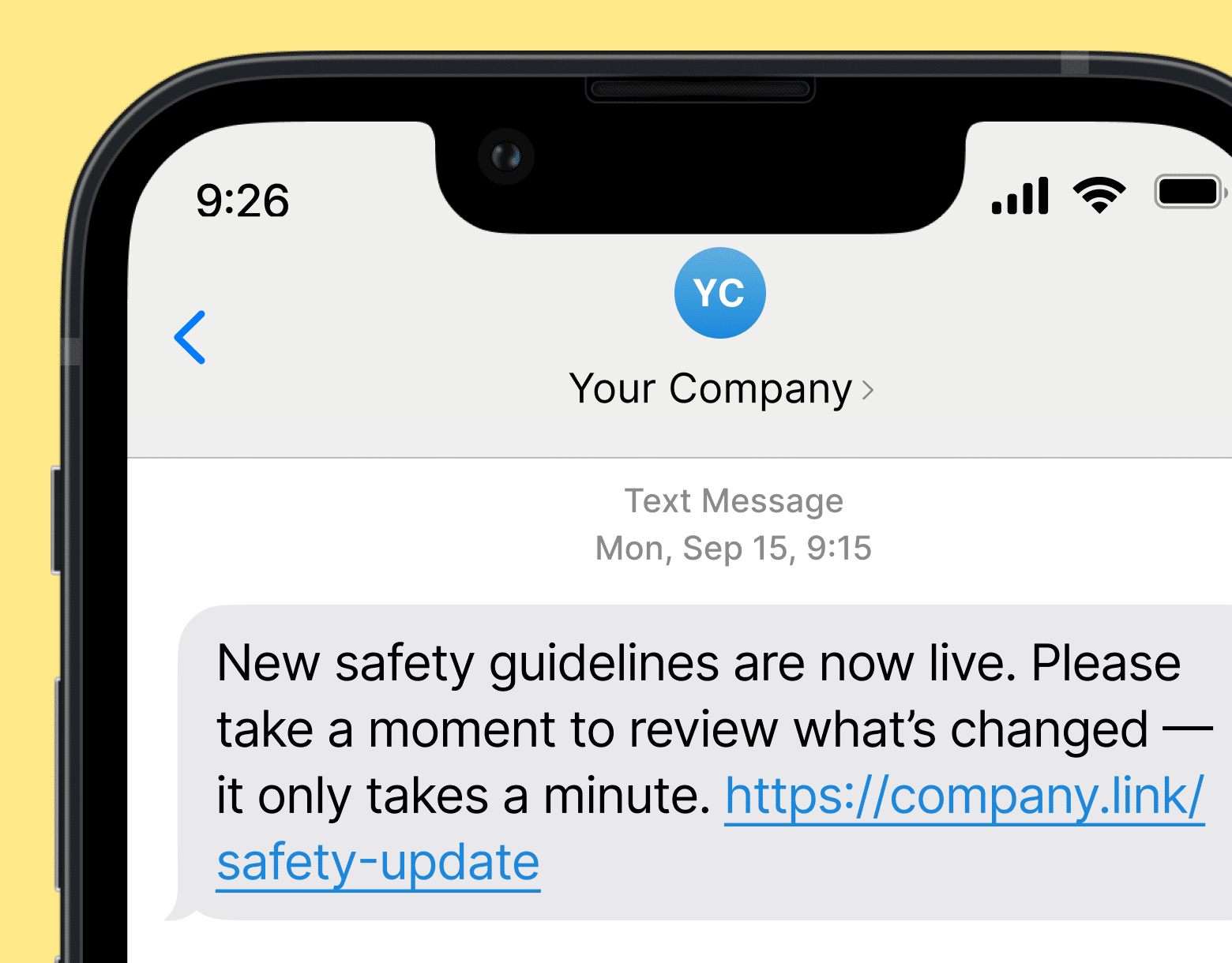
Why does SMS compliance matter?
Simple answer: because it’s the law. If found in violation of the TCPA, your business can be liable for paying millions of dollars in lawsuits. Several companies have been successfully sued for violating the TCPA.
Laws regulating SMS sending rules are in place to ensure businesses do not abuse infrastructure individuals rely on for daily communications. If these regulations weren’t in place, countless people would fall victim to predatory schemes and scams. The TCPA ensures that such communications are done in a way to respect the privacy of individuals and to protect them from abuse by malicious actors.
Ensure SMS compliance with these text messaging services for business.
SMS Compliance Checklist
If your business uses SMS messages to contact your customers or employees, it’s important to know how the TCPA affects how you send your communications. Review our handy SMS and TCPA compliance checklist before you send your next SMS message campaign to avoid running into legal trouble.
Inform recipients what they’re getting into
Before you can collect express written consent from those you wish to send SMS communications to, you have to properly inform them of what they’re consenting to.
This is a list of the things you need to inform your potential recipients about before you ask them to opt in to your SMS text communications:
- Your business name should always be included in both your opt-in agreement and all subsequent communications. Your recipients shouldn’t have to guess where your text messages came from!
- What kind of SMS messages recipients can expect. Think about the types of messages we discussed earlier; will you be sending promotional messages like sales offers, or transactional messages like tracking information?
- Messaging frequency describes how often you plan on sending messages to your recipients. The amount of messages you plan to send will impact on whether individuals choose to opt in to your communications.
- Cost of text messaging rates will vary depending on recipients’ cellular plans. Always state what the base rate per text message will be and never assume your recipients’ cellular plans will cover it.
- Terms and conditions outline the criteria through which individuals can use your product or service. Obviously this information can be quite lengthy, so opt-in messages should contain a link to your business’ T&C.
- Privacy policy describes how your business will protect the rights and privacy of those who use your product or service. Similar to terms and conditions, your privacy policy can be sent via link to the full explanation.
- Opt-out instructions like the UNSUBSCRIBE option we described earlier. TCPA and similar legislation requires businesses to include a fast and easy way for recipients to cease receiving communications.
Ensure you receive express written consent
You’ve provided all the requisite information to inform potential recipients of exactly what your SMS communications will entail. Now you’re ready to start compiling those recipients who’ve decided they want to receive your communications.
Express written consent is the most important aspect of your SMS compliance strategy. It is what determines the legality of the communications you send to members on your SMS distribution lists. Express written consent needs to be recorded in text, using the methods we outlined above—via online forms, text-based opt-in agreements, or verbal consent recorded in writing.
When drafting a new SMS campaign, it’s imperative that you keep your distribution lists updated with who has opted in and opted out of your communications. As we stated before, there can be immense penalties for sending messages to those who have opted out of receiving your communications.
CSVs are an easy-to-update way of keeping track of everyone who has opted in and out of your SMS communications. If your business drafts numerous SMS campaigns to your employees, using an internal communications software like ContactMonkey can help you ensure that you only send SMS communications to those employees who have opted-in to them. Simply select which CSV you want to send your SMS message to prior to sending it, and double check that it has been recently updated.
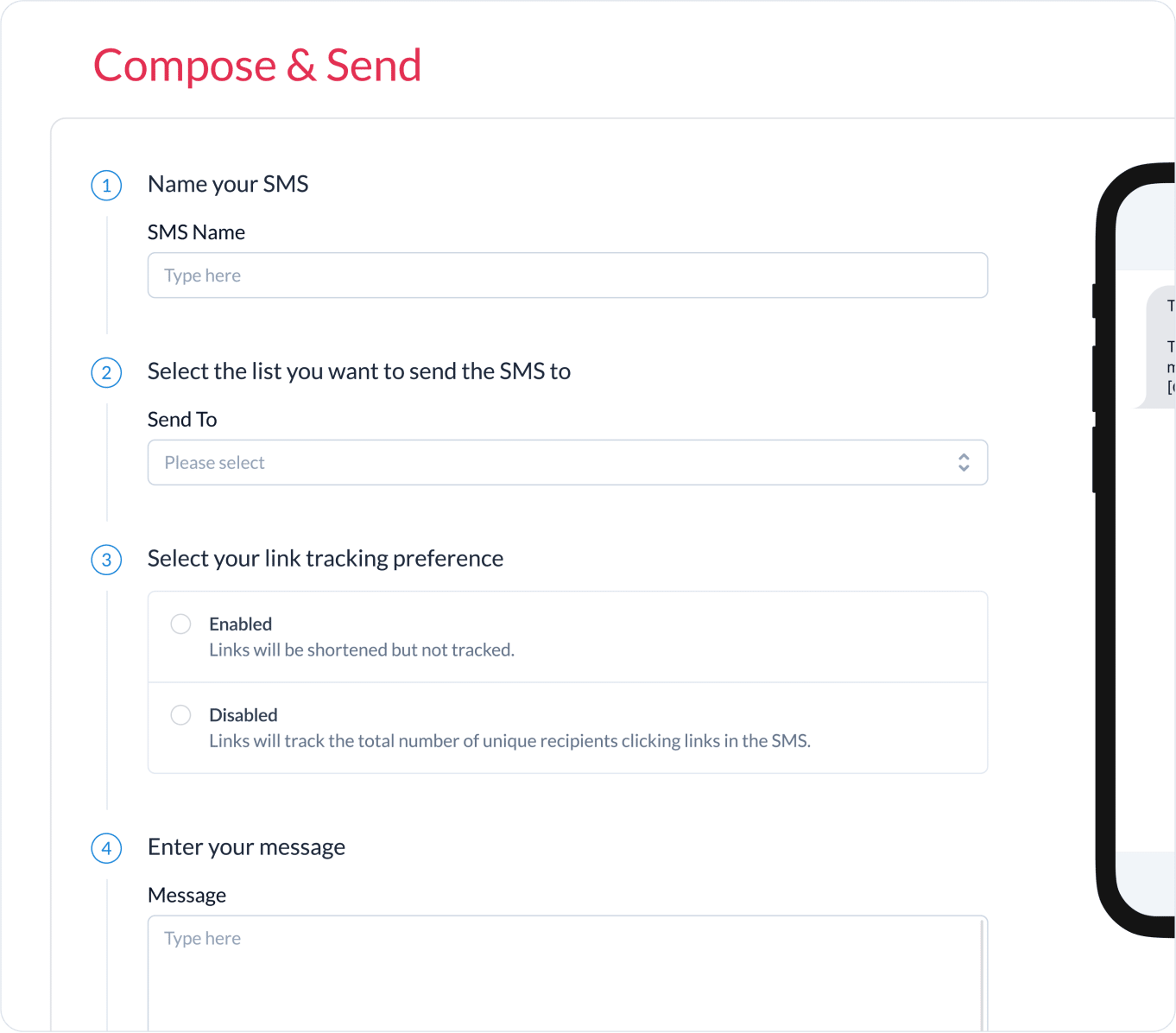
We’ll discuss how the TCPA applies to employee SMS communications in the following section. TCPA still applies to employees, but there are different expectations around what constitutes express written consent.
Follow text message campaign best practices
Now that you know how the TCPA regulates how you populate your SMS distribution lists, you’re ready to start sending your SMS campaigns. To ensure that messages are as effective as possible, and that they continue to follow TCPA rules, it’s best to follow the best practices for SMS campaigns:
Timing
Like any recurring communication, it’s important to establish effective times and frequency of messages you’re sending to recipients. Too few messages can make recipients forget why they’re receiving the messages at all, and too many messages can frustrate recipients, causing them to tune out—or worse—unsubscribe. Finding the right frequency of messages, along with the best times to send them, is crucial in order to maximize engagement.
Make your business easy to identify
Just like when you’re describing your SMS communications to potential recipients, you should always include your business name in every SMS message you send. Not only does this help recipients identify who is sending them text messages, but it also strengthens your internal and external brand voices and reinforces it within your recipients.
Avoid banned language
While there are plenty of kinds of content businesses can send, there are categories of content that should not be sent over text messages. Governed by the Cellular Telecommunications and Internet Association—popularly known as CTIA—the content that businesses cannot send via text are summarized by another acronym: S.H.A.F.T. While this content is not strictly legislated against, it is best practice to follow the correct procedures when sending messages of this kind, or to avoid them altogether.
Sex or adult content, Alcohol, Firearms, and Tobacco can technically be sent via text messages under CTIA. But to opt in to messages containing this kind of content, recipients must be presented with an age-gate that requires them to enter their birthdate to confirm that they are at least 21 years of age.
The CTIA also strongly recommends not sending messages that contain Hate, profanity, and depictions or endorsements of violence. Not only is this an SMS communication best practice, but it’s also just common sense.
Allow for easy opt out
We mentioned how you, when informing potential recipients of what your SMS communications will entail, should outline how recipients can unsubscribe from your communications. Including an easy and fast way for recipients to stop receiving messages from your business isn’t just a best practice, it’s required by various legislative acts like CAN-SPAM.
While CAN-SPAM requirements address email communications, they can equally apply to text messages. Businesses must provide recipients with a fast, easily-accessible, and uncomplicated way to unsubscribe from unwanted communications.
Do not message recipients who have opted out of your communications
We spoke about this in the previous section, but it’s worth restating: you must keep your distribution lists up to date to ensure that you do not send SMS messages to those who have opted out of your communications.
Regularly check your records to see if anyone has unsubscribed from your SMS communications, and update your CSVs accordingly. This small step can save you and your business huge headaches due to oversight.
Reach employees instantly with SMS
Send important updates straight to your team’s phones.
See SMS pricing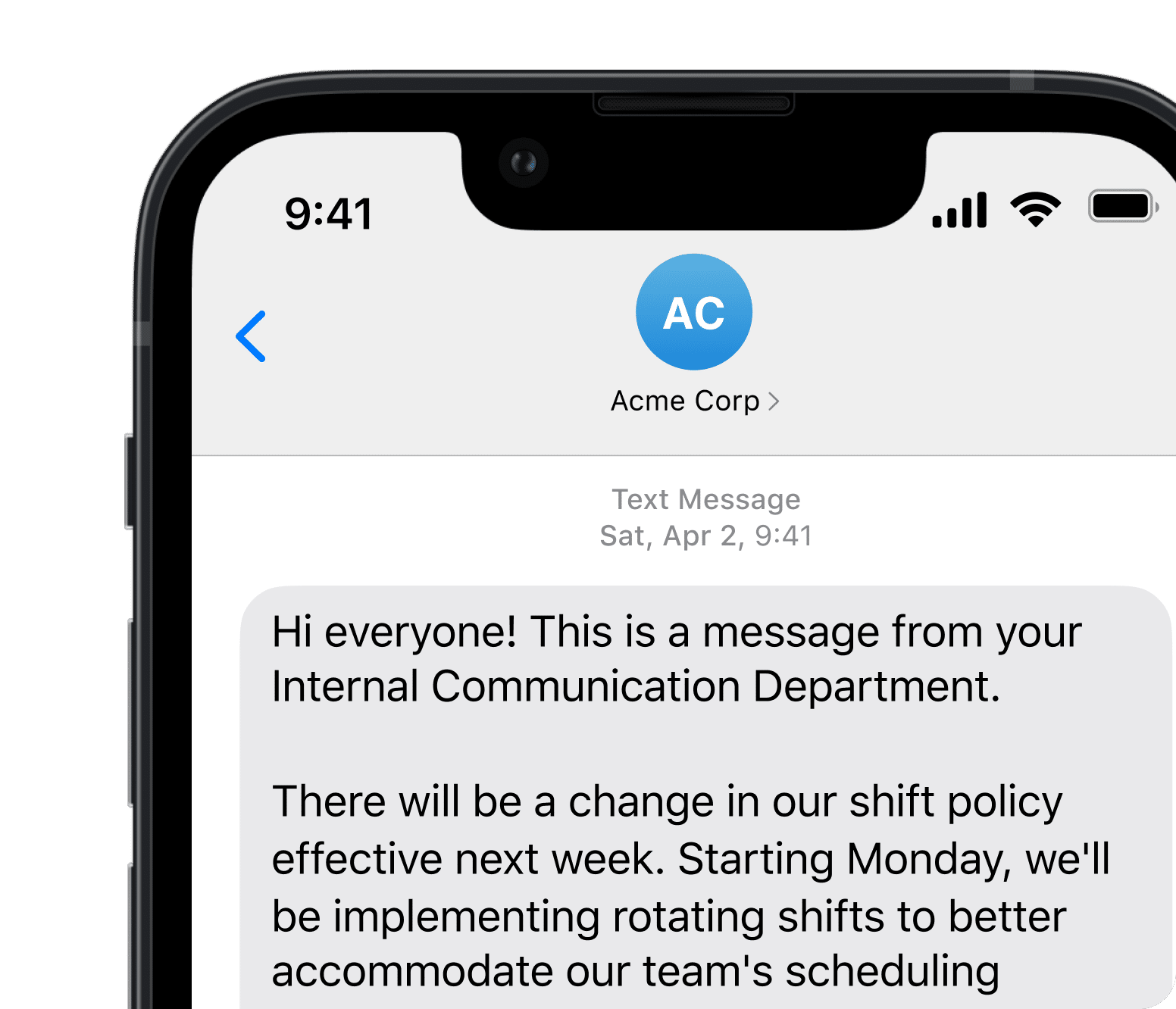
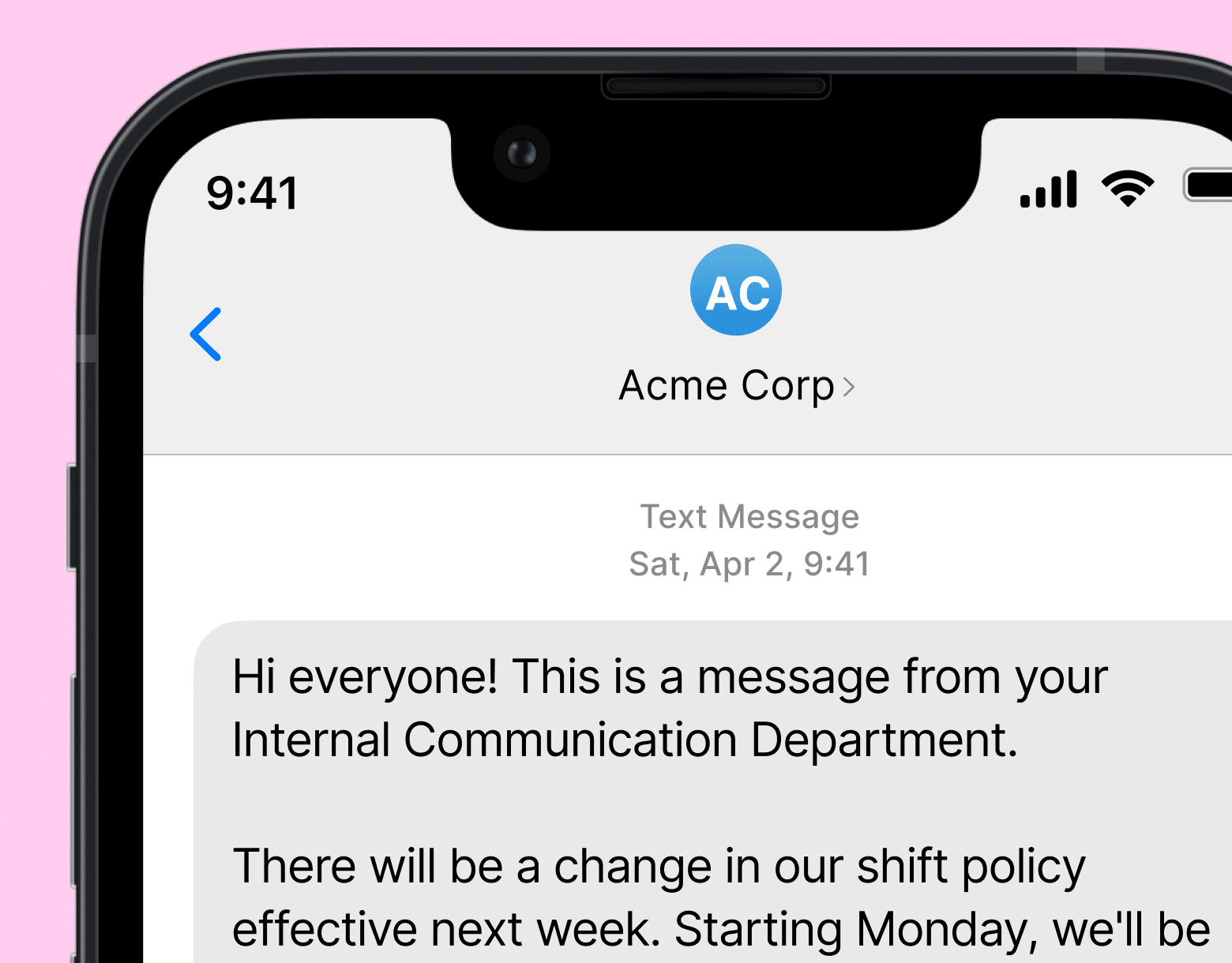
TCPA and Employees
TCPA SMS compliance laws apply to your employees as well, although there are some conditions that are slightly different in certain situations. The difference between promotional and transactional messages also have an influence on the legality of the messages you send to your employees, so it’s important to know the nuances of these text message laws.
Transactional vs. promotional messages to employees
It’s common practice for many employees to provide their phone number to their employer upon joining the business. In many cases, simply providing their phone number to an employer would be sufficient consent for transactional messages to be sent to employees. Things like crisis communications, emergency SMS notifications, shift updates, office closures, and similar messages can be considered transactional messages.
However, if you want to send promotional messages to your employees—for example encouraging them to buy/use your products or services—then express written consent is required according to TCPA compliance laws. And similar to your customer distribution lists, it’s crucial to keep your employee SMS distribution lists up to date to ensure that you don’t send messages to ex-employees or someone who has acquired an employee’s number after they’ve changed theirs.
Special circumstances around express written consent for employees
There are certain instances where express written consent can be done by the employer rather than the employee. If the business pays for their employees’ phones, the employer is technically considered the “subscriber”—and therefore able to provide consent for SMS communications.
While this may be the case, we discourage this. Not only is the issue of express written consent in this instance somewhat iffy, it’s also not best to act on behalf of your employees when it comes to their privacy. As part of our TCPA compliance checklist, we recommend that you still seek your employees’ express written consent before sending them recurring SMS communications.
Another instance where employers could send employees a mass text without consent is in the case of “emergency communications.” Corporate emergency communications are defined as “situations affecting the health and safety of recipients”. You can read more about emergency communication exceptions in our SMS FAQ page.
Inform your employees from the get-go
Ultimately, the best way to avoid consent issues within TCPA compliance for SMS is to let them know what your plans are from the start. Outline your SMS communications strategy to new employees within an onboarding guide or employee handbook.
Just like when informing potential external recipients about the nature of your SMS text messages, being clear about what you’re texting employees is the best way to obtain their express written consent. And to ensure that your employees continue to opt in, follow business texting etiquette best practices to guarantee that you’re sending them high-quality content while being in TCPA SMS compliance.
As we mentioned before, using an SMS-enabled internal communications software is the fastest and easiest way to send and manage SMS employee communications. With ContactMonkey, you can draft SMS messages, send them to various CSVs, and collect information about your SMS campaign analytics:

ContactMonkey also provides users with a wide range of SMS text message templates for numerous types of communication to help your campaigns perform the best they can. You can download our employee text message templates for free.
Let SMS Text Messages Improve Your Business
Now that you know the ins and outs of SMS compliance and SMS regulations, and have a practical SMS compliance checklist., you’re ready to incorporate SMS messages into your communications strategies.
Create, schedule, and send SMS campaigns with confidence knowing that you’re adhering to the established texting laws for businesses and respecting the privacy of your recipients.
If you’re sending to an internal audience, be sure to check out how ContactMonkey can integrate SMS text messages into your overall internal communications strategy. SMS is a terrific internal communications channel to reach your frontline, remote, or deskless employees.
Legal disclaimer: The advice given in this blog is nothing more than opinion, and does not constitute legal advice. For all questions related to SMS compliance, seek out a qualified Data Privacy lawyer. For more information about ContactMonkey and SMS communications, consult our SMS FAQ page.
Learn how ContactMonkey can make SMS communications easier, faster, and more effective for your business. Book your free demo of ContactMonkey to see us in action:



